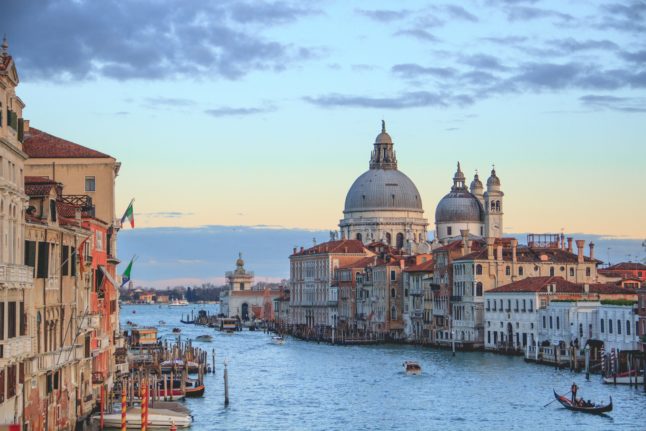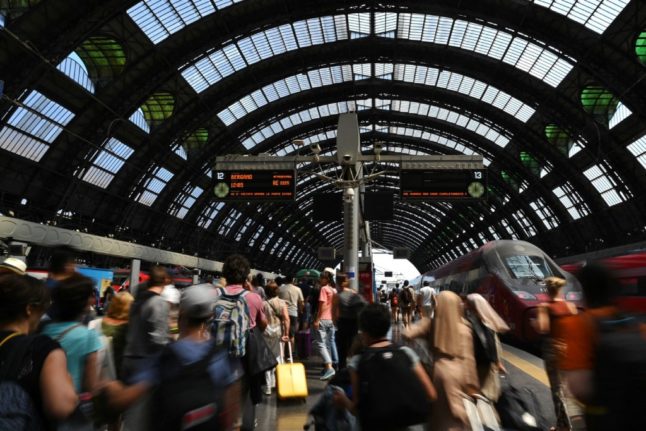After years of discussing a possible “tourist tax”, the city of Venice has confirmed it will make day-trippers pay from €3 to €10 for access to the city centre starting on January 16th.
Venice Mayor Luigi Brugnaro said the goal of the new tourism fee is to discourage day tourism at certain times of the year and encourage overnight tourism. Day-trippers will have to pay a fee, but those who stay overnight continue only to have to pay the city tax of €2 to €5, according to a government press release.
Dal #16gennaio 2023 entrerà in vigore il Contributo d’Accesso a #Venezia!
Una sperimentazione unica al mondo per la gestione dei flussi turistici.La città non sarà chiusa ma ci sarà un sistema premiante per chi prenoterà con anticipo.
Dettagli: https://t.co/Fy0eeMF4by pic.twitter.com/czCSKakJmw
— Luigi Brugnaro (@LuigiBrugnaro) July 1, 2022
The Commission and the City Council will now examine the regulatory text for the final green light scheduled for the summer.
“We are the first in the world to introduce this system, and we are aware that not everything will work well from the beginning, but we will be ready to improve in the course of work. We want to guarantee the tourist the best quality of the visit and make sure that the city is able to give visitors all the services they need”, said Tourism Secretary Simone Venturini.
READ ALSO: After flooding and coronavirus, is it time Venice stopped relying on tourism?
How much will I have to pay?
The contributo di acesso, or access contribution, will cost from €3 to €10, depending on factors such as tourism numbers for the day and season.
The city will determine a certain threshold of tourists, after which people will be required to pay higher sums. Travellers are encouraged to book in advance to avoid price increases.
Does the payment have to be made in advance?
The government said that nobody would be denied entry to Venice, meaning a pre-registration is not necessary. However, the mayor said that those who book their visit in advance would be “rewarded”. The reward will likely discount the fee.
How will the system work? Where do I pay?
According to the City of Venice, the payment is an alternative to the city tax. It will be required from every person that goes to the old city centre of Venice, as well as other major tourist destinations and islands in the region.
READ ALSO: 16 surprising facts about Venice to mark 16 centuries of the lagoon city
A single payment guarantees access to the old town and the smaller islands.
Tourists will be able to pay through an online and “multilingual” platform where they will receive a QR code to present in case of controls. Tickets should also be available to buy in connection with public transport – so if you are arriving by train, it will be possible to buy the train ticket and the entry pass together.
Who is excluded or exempt from the payment?
There are several exceptions to the payment, according to the website. Among them are residents from the Comune di Venezia, those who work or study there, and those who own homes in the city.
Additionally, exceptions include those born in the Comune di Venezia, children under six years of age, people with disabilities and their accompanying person, public workers, volunteers, people visiting family members, prisoners, or attending funerals, and many others.
Residents of the Veneto region “up to the thresholds that will be set by a specific Council resolution” are also exempt.
Those who stay overnight and, therefore, already pay the city tax through their hotel or short-term rental booking are also exempt from the fee.

What about people arriving on cruises?
Venice is a very popular stop for cruise ships and people visiting the city on a cruise tour will also have to pay the fee as they disembark in the old town. However, the City of Venice said they might determine a lump-sum measure in agreement with the relevant carriers.
READ ALSO: OPINION: Why more of Italy’s top destinations must limit tourist numbers
Which smaller islands are included?
Only one ticket and payment is required for those travelling to multiple islands, including Venice. The islands that are part of the group are:
- Lido di Venezia
- Pellestrina
- Murano
- Burano
- Torcello
- Sant’Erasmo
- Mazzorbo
- Mazzorbetto
- Vignole
- S. Andrea
- La certosa
- S. Servolo
- S. Clemente
- Poveglia
What if I simply don’t pay?
If you fail to produce proof of payment or that you are exempt from the fee, the sanction is from €50 to €300. The fine is the same in the case of people making false statements trying to obtain exemptions or reductions.
Additionally, visitors who don’t pay in advance will have to pay the full €10 fee.



 Please whitelist us to continue reading.
Please whitelist us to continue reading.
Member comments